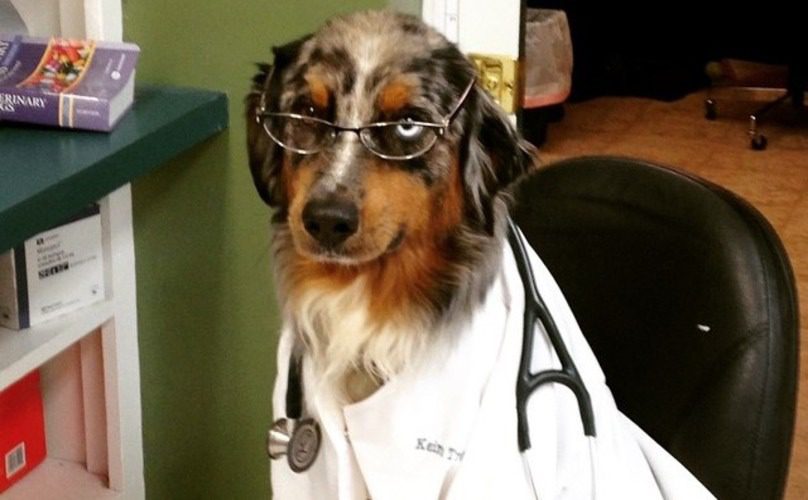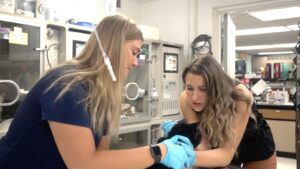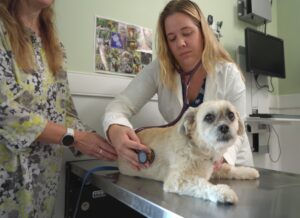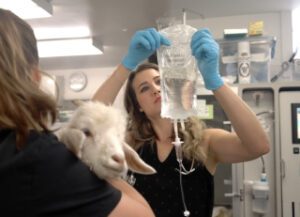Some people aren’t going to like what this post has to say. They are of the opinion that veterinary medicine is often a money-hungry profession, and they refuse to be swayed from it. I understand that it is an emotional topic for pet lovers and that many have had experiences that have left them believing “vets are only in it for the money”, but there are two sides to every coin.
I was a veterinary technician for more than 15 years, and for the last 5 of those years, I worked for a single vet who owned and operated her own practice. We became very close, and I witnessed firsthand the incredible balancing act that must be performed in order to keep that type of business afloat. Most people have no idea the blood, sweat, tears, and money that is required in order for a veterinary practice to simply open its doors each morning.
There are your basic costs to consider – rent, electricity, gas, etc. Then there are the supplies required. Veterinarians are there to save lives, and that means that they need to be prepared for any emergency situation. From expensive surgical instruments to life-saving medications, these items must be there ready to go, even if they never get used. That is a huge investment that may never provide a return.
And then there’s the equipment. Do you have any idea what a professional X-ray machine costs? Anywhere from $30,000 – $90,000. How about surgical monitoring equipment, dental equipment or laboratory diagnostic tools? Some practices even have more advanced instruments like ultrasound machines, laser pain therapy, or hydrotherapy tanks.
Let’s not forget about payroll. Depending on the size and scope of the practice, your veterinary office may be paying doctors, technicians, receptionists, groomers, kennel staff, and trainers. Not to mention the cleaning crew and the handyman that most offices need to keep things running smoothly. If you want quality staff, you have to give them reasonable pay. Most people are shocked when they find out just how little the average veterinarian makes in comparison to a physician in general practice.
The American Veterinary Medical Association (AVMA) reported a mean starting salary for new 2014 U.S. vet school graduates of $57,000 with an average student loan debt of $142,613. First-year physicians in general family practice will graduate with a similar student loan burden but can expect to earn a mean of $161,000 according to valuemd.com. That’s more than a $100,000 pay gap between your doctor and your vet, despite them attending the same amount of schooling and accruing the same debt!
Licensed veterinary technicians face the same drastic pay imbalance. They have skill sets and student loan debts similar to some nurses, yet they make an average of $10 – $12/hour compared to the average nurse’s pay of $20 – $36/hour. Veterinary technicians must do the jobs of the nurse, assistant, orderly, radiology tech, phlebotomist and janitor, all for about half the pay.
So why do veterinarians and their staff knowingly get into a profession where they will make drastically less money for the same amount of work? A profession where their integrity, ethics, and morality are constantly called into question by their clients? A profession where they can expect to go home covered in urine, poop, and vomit, as well as bites, scratches and bruises more often than not? The answer is simple. They willingly choose veterinary medicine because they legitimately LOVE animals, and want to dedicate their lives to helping them.
Trust me, your veterinarian hates having to tell you that your dog requires $3,000 surgery. They lose sleep over the animals that they cannot help because of money, but they also know what would happen if they spent all their time giving away free products and services. They’d lose their practices. And their homes. And their kids’ tuitions. Physicians are shielded from these awful financial conversations thanks to the insurance companies and the fact that humans cannot be denied life-saving medical care.
While veterinary insurance and options like Care Credit can help pet owners defray costs, they in no way compare to the human medical billing systems. If a person is unable or unwilling to pay their medical bills, the doctor and staff still get paid. An entirely different company is in charge of collecting the debt. A veterinary office is responsible for collecting what is owed to them in order to pay their staff and stay afloat.
So the next time you’re tempted to shout “All you people care about is money!” at your exhausted, overworked and underpaid veterinarian, please stop and think. Many veterinarians give back to their communities by providing low-cost vaccination clinics or spay/neuter nights. My own vet reserves an entire surgery day each week for spaying and neutering dogs and cats from the local humane society – at no cost.
If you are struggling to provide your pet with veterinary services there are several options. Care Credit allows you to pay off your bill interest-free over a set period of time (this is how I paid for one of my dogs’ knee surgeries). Those who cannot qualify for credit may try finding a local charitable organization to help – ask your vet about options in your area. The SPCA and Humane Society also offer lower-cost services and resources to those who qualify.



